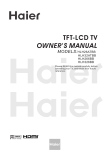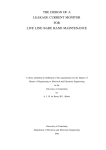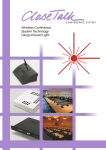Download Philips Flat 32" LCD TV 32" Black
Transcript
Register your product and get support at www.philips.com/welcome USER MANUAL www.philips.com/support Country Austria Belgium Czech Rep Denmark Finland France Germany Greece Hungary Ireland Italy Luxemburg Netherlands Norway Poland Portugal Slovakia Spain Sweden Switzerland UK Number 0810 000205 078250145 800142840 3525 8759 09 2311 3415 0821 611655 01803 386 852 0 0800 3122 1280 0680018189 01 601 1777 840320086 40 6661 5644 0900 8407 2270 8111 0223491504 2 1359 1442 0800004537 902 888 784 08 5792 9100 0844 800 544 0870 900 9070 This information is correct at the time of press. For updated information, see www.support.philips.com Model Serial Tariff 0.07/min 0.06/min free local local 0.09/min 0.09/min free free local 0.08/min local 0.10/min local local local free 0.10/min local local local Contents Introduction .......................................... 3 Safety ..................................................... 4 Television keys and connectors .......... 5 Getting started ..................................... 6 Opting to use a pin code ............................ 16 Changing your pin code .............................. 16 Options for restricting access to digital channels .......................................................... 16 Using the Common Interface slot ............ 16 Mounting the TV on a wall ........................... 6 Setting up lists of favourite channels 17 Connecting the aerial and mains ................. 6 Updating software automatically ..... 18 How to switch your TV on .......................... 6 Putting batteries in the remote control .... 6 Obtaining the software version................. 18 Information about software downloads .. 18 Remote control functions ................... 7 Downloading new software ....................... 18 Switching the TV on for the first time ....................................................... 9 Using the Options menu .................. 19 Going back to the Installation menu .......... 9 Understanding the information banner ................................................. 10 Viewing or listening to digital TV and radio ..................................................... 11 Getting programme listings .............. 20 Using digital teletext ......................... 21 Analogue teletext in digital mode ............. 21 Using conditional access .................... 22 Changing the order of stored channels .. 11 Tuning analogue channels automatically ...................................... 23 Checking for new TV channels or radio stations ............................................................ 11 Tuning analogue channels manually 24 Setting up TV and radio channels .... 12 Renumbering channels ...................... 25 Adding new channels or stations to your list ..................................................................... 12 Naming channels ................................ 26 Reinstalling all channels ............................... 12 Selecting your favourite channels .... 27 Installing digital channels manually ............ 13 Adding or removing channels from your list of favourites............................................. 27 Testing your TV reception ......................... 13 Selecting your language and location ................................................ 14 Setting your language and location ........... 14 Resetting the language to your preferred language........................................................... 14 Submenu options for language................... 14 Submenu options for location ................... 15 Restricting access to digital channels ............................................... 16 Setting the timer ................................ 28 Blocking channels (Parental Control) ............................................... 29 Creating a pin code for parental control 29 Blocking and unblocking selected channels .......................................................................... 29 Changing your pin code for parental control............................................................. 30 Blocking or unblocking all channels .......... 30 1 Locking the side controls (Child Lock) .................................................... 31 Troubleshooting ................................. 43 Environmental Information .............. 45 Enjoying Ambilight ............................. 32 Switching Ambilight on and off .................. 32 Configuring Ambilight settings................... 32 Adjusting picture and sound settings 33 Picture settings ............................................. 33 Sound settings ............................................... 33 Using Smart Picture and Smart Sound ................................................... 35 Using Smart Picture ..................................... 35 Using Smart Sound ....................................... 35 Picture Formats ................................. 36 Using teletext ..................................... 37 Using the TV in High Definition mode .................................................... 39 Connecting HD equipment to your TV .. 39 Adjusting picture or sound settings in HD mode .............................................................. 39 Picture settings in HD mode ..................... 39 Sound settings in HD mode ....................... 39 Configuring the TV in HD mode .............. 40 Displaying in native 1080 mode................. 40 Supported formats ....................................... 41 Using Auto HDMI......................................... 41 HDMI 1.3a CEC ............................................ 41 Using the TV as a PC Monitor .......... 42 Connecting a PC to your TV ..................... 42 Adjusting picture or sound settings in PC mode .............................................................. 42 Picture settings in PC mode....................... 42 Sound settings in PC mode ........................ 42 Configuring the TV in PC mode ............... 42 Supported PC resolutions .......................... 42 2 Information for users in the UK ....... 46 Introduction Congratulations on your purchase and welcome to Philips! Product features Note: Available in selected models To fully benefit from the support that Philips offers, register your product at www.philips.com/welcome. This manual contains information about how to install and operate your TV. If you still have problems after reading this manual, call your Local Philips Customer or Service Centre. The telephone numbers and addresses are given in the worldwide guarantee booklet supplied with the TV. Product information The model and serial number can be found at the rear of the TV, on left side of the TV, and on the packaging. Caring for the screen 1. Do not remove the protective sheet until you have completed the stand or wall mounting and connections. 2. Use the soft cloth that is provided to clean the front of the TV. 3. Do not use a cloth that is dripping with water. Do not use acetone, toluene or alcohol to clean the TV. As a safety precaution, unplug the power cord from the mains when you clean the set. X 4. Do not touch, push or rub or strike the screen with anything hard as this may scratch or damage the screen permanently. 3 Safety 1. Two people are required to lift and carry a TV that weighs more than 25 kilogrammes. Improper handling of the TV can cause serious injury. 2. If you place the TV set on a surface, ensure the surface is level and that it can withstand the weight of the TV. 3. Mounting the TV on the wall requires special skill that should only be performed by a qualified personnel. You should not attempt to do the work yourself. Philips bear no responsibility for improper mounting or mounting that results in accident or injury. 4. This TV is compatible with the VESA wall mounting standard. Please contact your local electronics retailer for a VESA compliant bracket to wall mount this TV. Before you mount your TV on a wall, ensure the wall is suitable to carry the weight of the TV. 5. Wherever you place or mount the TV, ensure that air can circulate freely through the ventilation slots. Do not place the TV in a confined space. disconnect the TV from the mains and have the TV checked by a qualified technician. 9. Do not touch any part of the TV, power lead, or aerial lead during lightning storms. 10. Do not leave the TV in standby mode for an extended period of time. Instead, disconnect the TV from the mains. 11. The TV set is always connected to the mains. You can disconnect the TV from the mains by doing one of the following tasks: • unplugging the mains cord located at the back of TV set • unplugging the mains plug from the mains socket outlet Pull the power cord by the plug - do not pull on the power cord. 12. Ensure that you always have easy access to the mains cord or the mains plug to disconnect the TV from the mains. 6. Do not place naked flame sources such as lighted candles close to the TV. 7. Do not expose the TV or the batteries of the remote control to heat, direct sunlight, rain, or water. X X 8. Do not place a vessels filled with water on top of or near to the TV. Spilling water into the TV can result in electric shock. If you spill water into the TV, do not operate the TV. Immediately 4 13. Ensure the power cord is fully inserted into the TV mains socket and the wall socket. 14. If the TV is mounted on a swivel base or swivel arm, ensure no strain is placed on the power cord when the TV is swivelled. Strain on the power cord can loosen connections and cause arcing or fire. 15. Verify that the mains supply voltage in your home corresponds to the voltage printed on the sticker at the rear of the TV. Television keys and connectors 1. . POWER To switch the TV on and off. To disconnect from the mains, remove the mains cord from the mains socket at the back of the TV or remove the mains plug from the wall socket. 2. - PROGRAM + To select a channel. 3. MENU To display or close menus. 4. - VOLUME + To increase or decrease volume. 5. Audio Video To connect to a camera or camcorder. 6. Headphones To connect headphones. The mute function does not work when headphones are plugged in. 7. Side HDMI To connect to peripheral equipment, including high-definition equipment. 8. Common Interface (CI) slot To connect a Conditional Access card such as a cable card or smartcard. 9. TV Aerial To connect to the aerial plug. 10. HDMI To connect to peripheral equipment, including high-definition equipment. Some models have three HDMI connectors. 11. EXT 4 Y/C and EXT 4 YPbPr To connect to peripheral equipment. Only one video connection can be used at a time. 12. EXT 1 (RGB) and EXT 2 (CVBS/SVIDEO) To connect peripheral equipment. 13. For service use (do not insert the headphones here). 5 Getting started Mounting the TV on a wall How to switch your TV on This TV is compatible with the VESA wall mounting standard. Please contact your local electronics retailer for a VESA compliant bracket to wall mount this TV. To switch the TV on, press the POWER key on the side controls. A blue indicator light comes on and after a few seconds the screen lights up. Insert the cables into the TV before you mount it on the wall. If the TV set remains in standby mode, the indicator light remains red. Press the PROGRAM +/- key on the side controls or press the P +/- key on the remote control. Ensure that there is a distance of at least 30 mm between the wall and the back of the TV. For sets with subwoofer, an additional 10mm is required for optimal sound effect. 40mm Connecting the aerial and mains Insert the aerial plug and the mains cord firmly into their respective socket at the bottom of the TV before connecting them into the wall socket. 6 Putting batteries in the remote control Insert the batteries into the remote control, ensuring that the + and - ends of the batteries are aligned correctly. The correct alignment is indicated inside the casing of the remote control. Remote control functions 1 4. Subtitles To activate or deactivate subtitles in digital mode. 5. Teletext (Dual Window) For information about using teletext, see Using teletext on page 37. 6. Analogue menu To enter or exit the TV menus in analogue mode. 2 3 4 5 6 7 8 9 10 11 12 13 7. Î, ï, Í, Æ To select and adjust menu options. 8. u OK To confirm selections and access the program list in digital mode. 9. Analogue/Digital To switch between analogue and digital mode. 10. + VOL – To increase or decrease volume. 1. Standby To put the TV in standby mode or to switch the TV on. Alternatively, press to , P +/-, or . 2. Teletext For information about using teletext, see Using teletext on page 37. 3. Sound mode To change programmes to Mono from Stereo and Nicam Stereo. - For bilingual programmes, select Dual å or Dual » as indicated during the broadcast. - In digital mode, ù displays the list of audio languages. 11. Mute To turn the speaker sound on or off. 12. to Numerical keys To access programme numbers directly. For a two digit programme number, enter the 2nd digit soon after the first digit, before the dash disappears. 13. Screen information - In digital mode, to display or exit the information banner. For information see Understanding the information banner on page 10. - In analogue mode, to display or remove the programme number, the sound mode, the clock and the remaining time of the sleep timer. 7 Remote control functions (cont.) 14 15 16 17 18 19 18. Cancel To exit teletext in digital mode. Use this key if there are no colour key to exit teletext. 19. Digital menu To display or exit from the digital menu in digital mode. 20. Programme listings To obtain programme listings. For information, see Getting programme listings on page 20. 20 21 21. + P – Programme To select the previous or next TV channel. 22 22. BACK To toggle between the previously viewed channel and the current channel. This key can also be used to edit or move back when you are naming channels. 23. Smart picture and sound To toggle between predefined picture settings and sound settings. For information, see Using Smart Picture and Smart Sound on page 35. 23 24 14. Picture format To change the picture format. For more information about see Picture Formats on page 36. 15. Source List To display the list of sources on which you can view your TV or your peripheral equipment. 16. Teletext colours For information about using teletext, see Using teletext on page 37. 17. Options For information about using options, see Using the Options menu on page 19. 8 24. Ambilight Applies only to TVs equipped with the Ambilight feature. - ON/OFF: To switch ambilight on or off. - MODE: To select the ambilight mode. Switching the TV on for the first time When you turn the TV on for the first time, the TV is in digital mode and the following menu appears on screen. Setup 11:28 Language Country Time Zone Service Scan English Español Français Italiano Magyar Select your preferred language Going back to the Installation menu This procedure resets both the digital and analogue modes to the factory default settings. 1. On the side controls of the TV set, press and hold down the MENU key for 5 seconds. A menu appears on the screen. 2. Select your language, country and time zone as if this is the first time you have turned on the TV. Selecting your language, country and time zone 1. Press the Æ key to enter Language, and press the Î or ï key to select your preferred language. 2. Press the u key to confirm your selection. 3. Press the Î or ï key to highlight Country or Time Zone, and press the Æ key to enter Country or Time Zone. Note: If you select the wrong country, the channel numbering will not conform to the standard for your country. You might receive fewer or no services. 4. Press the Î or ï key to select your preferred Country or Time Zone. 5. Press the u key to confirm your selection. 6. Press the ï key to select Service Scan. 7. Press the u key to start the installation. The TV searches for the available analogue and digital channels. 8. If no digital channels are detected, press key to switch to analogue mode. 9 Understanding the information banner When you select a digital programme, an information banner is displayed at the top of the screen. The banner disappears after a few seconds. preset number 2 programme start and end time symbols 11:00-11:45 TXT BBC 2 Snooker channel name programme title clock 10:38 Minutes left : 22 remaining time of programme The information banner contains the preset number, channel name, programme title, programme start time, programme end time, clock, and the remaining time for the current programme. Description of the symbols on the information banner • i More information about this programme is available. To display more information, press the key once. Press the key a second time to remove the information. • Subtitling is available To access subtitles, press the key. key to Alternatively, press the access the options menu and then select subtitles. TXT • Analogue teletext is available in digital mode. • ù Other languages are available To select other languages press the key. Press the key to access the options menu. • u The colour of the symbol (red, green, yellow or blue) indicates the selected list of favourite channels. 10 Note: A white symbol u appears if the channel is stored in one or more of the list of favourites channels which are currently not activated. Viewing or listening to digital TV and radio Changing the order of stored channels 8. Press the green key to confirm your choice. The exchange is complete. You can change the order of the digital channels and radio stations that you have stored. 9. Repeat the previous steps until all of the channels are in the required order. 1. If you are in analogue mode, switch to key on digital mode by pressing the the remote control. 2. Press the menu. key to display the setup 3. Press the ï key to select Installation, and press the Æ key twice to select the Service lists menu. Setup Installation Service lists Service setup Test reception 11:28 Rearrange services View new TV channels Listen to new Radio stations Close 4. Press the Î or ï key to select Rearrange services, and press the Æ key. Setup Installation>Service lists Rearrange services Listen to new Radio stations 11. Press the 11:28 1 _ 2 _ 3 _ 4 _ 5 _ 6 _ 7 _ 8 _ 9 _ 10 _ Change preset location of services Close 5. Press the Î or ï key to highlight the channel you want to select. 6. Press u key to activate the channel. To uninstall the selected channel, press the red key. key to exit the menu. Checking for new TV channels or radio stations You can check for the availability of TV channels or radio stations that have been launched by the broadcaster after you have installed the TV. 1. If you are in analogue mode, switch to key on digital mode by pressing the the remote control. 2. Press the menu. Manage service lists View new TV channels 10. Press the Í key to return to the previous menu. key to display the setup 3. Press the ï key to select Installation, and press the Æ key twice to select the Service lists menu. 4. Press the Î or ï key to select View new TV channels or Listen to new Radio stations. 5. If new services are available, press the Æ key to enter into the list of services, and press the Î or ï key to move through the list. For information about how to add the new services to your list of favourite channels, see Adding new channels or stations to your list, on page 12. 6. Press the Í key to return to the previous menu. 7. Press the key to exit the menu. 7. Press the Î or ï key to select the new channel number. 11 Setting up TV and radio channels Adding new channels or stations to your list 7. Press the Í key to return to the previous menu. You can search for new TV channels or radio stations that have been launched by the broadcaster after the initial installation. 8. Press the 1. If you are in analogue mode, switch to key on digital mode by pressing the the remote control. This menu allows you to reinstall all the digital TV channels and radio stations. 2. Press the menu. key to display the setup 3. Press the ï key to select Installation, and press the Æ key. Setup Installation 11:28 Service lists Service setup Test reception Add new services Reinstall all services Manual install services Close 4. Select Service setup, and press the Æ key. 5. Press Æ to add new services, and press the u key to activate the installation. 1. If you are in analogue mode, switch to key on digital mode by pressing the the remote control. 2. Press the menu. key to display the setup 3. Use the ï key to select Installation, and press the Æ key. 4. Select Service setup, and press the Æ key. Setup Installation Search TV channels found Radio stations found Other services found Store Discard Scan for new services Close A search begins. Any new channels are added to the channel list menu. The percentage of the installation that has been completed and the number of channels found is displayed. 6. When the search is complete, press the u key to accept the new services. 11:28 Service setup Add new services Reinstall all services Manual Install services 11:28 Service setup Add new services Reinstall all services Manual Install services 12 Reinstalling all channels 5. Select Reinstall all services, and press the Æ key. Install and manage services Setup Installation key to exit the menu. Search TV channels found Radio stations found Other services found Store Discard Reinstall will remove all service settings Close 6. Press the u key to start the installation. A search is for digital services is started. The services are stored automatically. When the search is complete, the menu indicates the number of digital services found. 7. Press the u key to store the services. 8. Press the Í key to return to the previous menu. 9. Press the key to exit the menu. Setting up TV and radio channels (cont.) Installing digital channels manually You can manually scan services by keying in the frequency of your target channel. 2. Press the ï key to select Installation, and press the Æ key. Setup Installation 1. If you are in analogue mode, switch to key on digital mode by pressing the the remote control. 2. Press the menu. key to display the setup Frequency Network name Signal quality Signal strength Test signal quality 3. Select Service setup, and press the Æ key. 4. Select Manual install services, and press the Æ key. Setup Installation > Service setup Add new services Reinstall all services Manual install services 11:28 Frequency Network name Signal quality Signal strength Services found Store Discard Manual install services Close 5. Press the to keys to key in the frequency of your target channel, and press u key to start the search. 6. When the search is complete, press the u key to accept the new service. 7. Press the Í key to return to the previous menu. 8. Press the Service lists Service setup Test reception 11:28 . Close 3. Press the ï key to select Test reception, and press the Æ key. The programme frequency, the network name, the signal quality, and the signal strength are displayed. 4. Press the Æ key to enter the Frequency, and press the to keys to enter the frequency of the digital channel that you want to test. - Press the Æ key to move to the next character space. - If the test reception indicates that the signal strength is poor, adjust or update your aerial. Contact a professional aerial installer for best results. 5. After keying in the frequency, press the u key to exit Frequency. 6. Press the Í key to return to the previous menu. 7. Press the key to exit the menu. key to exit the menu. Testing your TV reception This menu allows you to check the strength of the signal that you are receiving through your aerial. 1. From the digital mode, press the key to display the setup menu. 13 Selecting your language and location You can select your preferred language, country and time zone. Setting your language and location 1. If you are in analogue mode, switch to key on digital mode by pressing the the remote control. 2. Press the menu. key to display the setup 3. Press the ï key to select Preferences and press the Æ key. Setup Preferences Language Location 11:28 Audio Subtitle / Teletext Subtitling Mode Subtitling for hearing impaired System 2. Press the menu. key again to display 3. Press the ï key to select the second item in the menu. 4. Press the Æ key to enter into the next level of the menu. 5. Press the Æ key followed by the ï key to select the fifth item on the menu. 6. Press the Æ key to enter into the next level of the menu. 7. Press the Î or ï key to select your preferred language. 8. Press the u key to confirm your selection. 9. Press the key to exit the menu. Select your preferred language Close Submenu options for language 4. Select Language or Location, and press the Æ key. This list describes the submenu options for choosing your languages. 5. Press the Î or ï key to select an option, and press the Æ key to enter into its sub-menu. • Audio: To select the audio sound language. • Subtitle/Teletext: To select the subtitle and teletext language. • Subtitling Mode: To set subtitles to off, on, or auto. In auto mode, subtitles are displayed when they are supplied with the original audio transmission. • Subtitles for hearing impaired: To activate or deactivate the subtitling for hearing impaired. This feature is available only if it is supplied in the broadcast. • System: To select the menu language. 6. Select your values, and press the u or Í key to exit. 7. Press the Í key to return to the previous menu. 8. Press the key to exit the menu. Resetting the language to your preferred language If you have selected the wrong language and do not understand the selected language, perform the following steps to bring you back to your preferred language. 1. Press the 14 key to exit the menu. Selecting your language and location (cont.) Submenu options for location This list describes the submenu options for choosing your location. • Country: To select the country where you are located. • Time zone: To select the time zone where you are located. The language can be selected independently from the country. Caution: If you select a wrong country, the channels might not be numbered according to the standard for your country. Consequently, you might receive fewer or no services. 15 Restricting access to digital channels You can restrict access to digital channels. 4. Press the ï key to select Change pin code. Opting to use a pin code 5. Press the Æ key to enter into the Change pin code menu. 1. If you are in analogue mode, switch to key on digital mode by pressing the the remote control. 2. Press the menu. key to display the setup 4. Press the Æ key to enter into the Set pin code protection menu. Set pin code protection Maturity rating TV channels Radio stations Change pin code 11:28 On The default pin code is 1234. If you forget your pin code, reset to the default pin code by entering the universal code 0711. 3. Press the ï key to select Access restrictions, and press the Æ key. Setup Access restrictions 6. Follow the on-screen instruction to change your pin code. Off Options for restricting access to digital channels This list describes the submenu options for access restrictions. • Maturity rating To select a rating at which a programme is blocked. This feature works only for programmes that are broadcast with a rating. • TV channels To select a TV channel to block. • Radio stations To select a radio station to block. • Change pin code To change your pin code. Switch pin code protection ‘on’ or ‘off’ Close 5. Press the Í or Æ key to select On, and press the u key to exit. Warning: When you opt to use a pin code, you must use that pin code when you schedule a programme for recording. 6. Press the Í key to return to the previous menu. 7. Press the key to exit the menu. Changing your pin code 1. If you are in analogue mode, switch to key on digital mode by pressing the the remote control. 2. Press the menu. key to display the setup 3. Press the ï key to select Access restrictions, and press the Æ key. 16 Using the Common Interface slot Your TV is equipped with a Common Interface (CI) slot. For information about using the CI slot see Using conditional access on page 22. Setting up lists of favourite channels You can create up to four lists of your favourite TV channels and radio stations. • • Press the Î or ï key to select a TV channel. 1. If you are in analogue mode, switch to key on digital mode by pressing the the remote control. 2. Press the menu. • Press the u key to confirm your selection. key to display the setup • Press the Í key to exit. Setup Favourites Preferences Information Access restrictions Installation Select TV channels To add TV channels to a list. 11:28 • List 1 List 2 List 3 List 4 • Press the Î or ï key to select a radio station. • Press the u key to confirm your selection. Make changes to your lists of favourite services Close 3. Press the Æ key to enter the Favourites menu. 4. Press the Î or ï key to select List 1, List 2, List 3, or List 4, and press the Æ key. 5. Press the Î or ï key to select a setting. Select radio stations To add radio stations to a list. • Press the Í key to exit. • Add all services To add all available services to a list. • Press the u key. • Remove all services To remove all services from a list. • Press the u key. 6. Press the Æ key to enter into the submenu. This list describes the options for the Favourites menu. • Name: To name a list. • Press the Î or ï key to move around the name display area. • Press the P + / – keys to select the characters. The name can contain up to 16 characters. • Press the character. key to change a • When the name has been entered, press u key to exit. 17 Updating software automatically You can install new software and obtain information about the current software version. Obtaining the software version 1. If you are in analogue mode, switch to key on digital mode by pressing the the remote control. 2. Press the menu. key to display the setup Setup Favourites Preferences Information Access restrictions Installation 11:28 List 1 List 2 List 3 List 4 You must put the TV into standby mode when the download is due. If a problem occurs during the software download, you are informed about the next scheduled software download. Press the u key to return to using your TV normally. If the software download is successful, a congratulatory message appears. Press the u key to return to using your TV normally. Downloading new software 3. Press the ï key, and then the press Æ key twice to select Information. The software version is displayed. Favourites Preferences Information Access restrictions Installation When a download is accepted, the software is downloaded at the designated time and date. You can obtain information about new software and upgrade instructions from www.philips.com. Make changes to your lists of favourite services Close Setup accept new software when it is available 11:28 System software 1. From the Setup menu, press the Æ key to enter the selection mode. 2. Press the Î or ï key to select Yes or No. If you select Yes, you choose to accept software updates automatically through off-air downloading. In automatic mode, the TV detects whether an update is available while the TV it is in standby mode. Provide information on problem reports and installing new software Close Information about software downloads The software download menu describes the software and provides the date and time of the download. New software can update menus or add new features. However, new software cannot change the way the TV operates. You are advised to always download and 18 The next time the TV is turned on a message appears on the screen to indicate that new software is available. Note: New software and upgrade instructions may also be obtained from the website: www.philips.com/support 3. Press the u key to activate the new software download. Using the Options menu • Press the Î or ï key to select your language. You can directly access your list of favourite channels and configure your language and subtitle options. • Press the u key to confirm your selection. 1. If you are in analogue mode, switch to key on digital mode by pressing the the remote control. 2. Display the options menu by pressing the white key. Options Favourites Subtitle language Audio language Mode To permanently change the subtitle language, see Selecting your language and location on page 14. • • Press the Î or ï key to select your language. 11:28 None Philips 1 Philips 2 Philips 3 Philips 4 • Press the u key to confirm your selection. To permanently change the audio language, see Selecting your language and location on page 14. Selects the active favourite list Exit 3. Press the Î or ï key to select an option, and press Æ key to enter its sub-menu. • 4. When you have finished, exit the menu by pressing the white key. This list describes the submenu of the Options menu. • Audio language To change the audio language. Favourites To select you list of favourite channels. Mode To receive radio stations, TV channels or services. Note (for the UK only): The TV list contains both radio stations and TV channels. • Banner duration To specify the amount of time that the information banner is displayed. • Press the Î or ï key to select your list of favourite channels. • Press the u key to confirm your selection. • To deactivate your lists of favourite channels, select None. For information about how to create a list of favourite channels, see Setting up lists of favourite channels on page 17. • Subtitle language To change the subtitle language. 19 Getting programme listings You can access an Electronic Programme Guide to provide you with a quick and easy way to view a list of digital programmes. You can navigate through the guide and obtain detailed information about the programmes. 1. If you are in analogue mode, switch to key on digital mode by pressing the the remote control. 1 BBC 1. BBC 2. BBC TWO 3. ITC Channel 3 4. Channel 4 5. ITV 2 6. BBC CHOICE 17:28 Now/Next Now See it saw Snooker Trisha Gmtv2 Oakie Doke Top Today Next Microsoap Ice Skating This morning This afternoon Bodger & Badger Close Options A list of digital programmes in the currently selected favourites list is displayed. 3. Press the ï key to enter into the Preset/Service list. Alternatively, press the Æ key to access the Today list. 4. Press the Î or ï key to select a programme. 5. Press the colour keys to activate the TV guide. The TV guide features are displayed at the bottom of the screen. key to display more 6. Press the information about the selected programme. More information is displayed only if it is available. 7. When you have finished, press the key to exit the menu. This list describes the submenu for Options. 20 Top (yellow key) To access the top of the list. • Close (blue key) To exit from the TV guide. • Options (white key) To select your list of favourite channels, your mode, or your themes. Themes are areas of interest. You can, for example, decide to display only the following themes: drama, news, or movies. key to display the 2. Press the Electronic Programme Guide. Preset/Servcie • Using digital teletext Note: Digital teletext is available in the U.K. only The digital teletext services differs greatly from the analogue teletext service. The digital teletext service contains graphics and text that are laid out and controlled by the broadcaster. Some digital channels, offer a dedicated teletext services. Some digital channels also offer information about the programme being broadcast. Sometimes, digital teletext takes priority over subtitles. In this case, subtitles do not reappear automatically when you exit from digital teletext on a channel that is broadcasting subtitles. To make subtitles key on the remote reappear, toggle the control or change the channel. Analogue teletext in digital mode Note: Analogue teletext is available in all countries If you see the teletext icon TXT on a digital channel without digital teletext services, the icon indicates that analogue teletext is available in digital mode. Press the teletext. key to access analogue If you have selected the UK as your country, press and hold the seconds. key for at least 5 For information about how to use the analogue teletext functions, see Using teletext on page 37. To use digital teletext, follow the instructions on screen. You use teletext by pressing the following keys: • Í Æ Î ï cursor keys • colour keys • teletext on/off key • to numerical keys If no colour key links are available in the Digital Teletext to allow you to exit teletext mode, use the key instead. When you switch to a digital channel with a teletext service, the teletext is downloaded in the background. Wait for the download to complete before you press the key. If you press the key before the download is complete, there is a short delay before the teletext is displayed. When you navigate in digital teletext, there is a short delay while the page downloads. A prompt or message is often broadcast on the page to let you know the progress. 21 Using conditional access You use conditional access when you subscribe to some service providers such as pay TV. The TV contains a Common Interface (CI) slot to receive a Conditional Access (CA) card. When you subscribe to certain services, the service provider supplies you with a CA card, such as a cable card or smart card. Some service providers also supply you with a CI module to hold the CA card. The CI module is sometimes referred to as a PCMCIA adapter. If your CA card is not provided with a CI module, ask your service provider for information about how to obtain a CI module. If your CA card is provided with a CI module, insert the card into the CI module first, then insert the CI module into the CI slot on the TV. The following instructions describe how to use conditional access. 1. Switch off the TV. 2. If your module comes with a viewing card, insert the CA card into the CI module. Ensure that the arrow on the CA card faces the arrow on the module. 3. Insert the CI module into the CI slot on the TV. COMMON INTERFACE MODULE CONDITIONAL ACCESS CARD 22 4. Switch on the TV. 5. Press the menu. key to enter the Setup 6. Press the ï key to select Access Restriction, and then press the Æ key. 7. Press the Æ key to enter the Conditional Access Module menu. 8. Press the key to access the CAM functions, as indicated on the screen. IMPORTANT If the CA card or CI module is not inserted, or is inserted incorrectly, the CA menu will not be displayed. The functions that appear on screen depend on the service provider. Tuning analogue channels automatically You can automatically search for and store analogue channels. 1. If you are in digital mode, switch to analogue mode by pressing the key on the remote control. 2. Press the menu. Auto Store Program TV 3 196 MHz key to display the Main To exit or interrupt the search before it is Main Picture Sound Ambilight* Features Install complete, press the Brightness Colour Contrast Sharpness Colour Temp More Option... key. If you interrupt an auto store, not all of the channels are stored. To store all channels, restart the auto store again. Automatic Tuning System (ATS) * Available in selected models 3. Press the Î or ï key to select Install, and press the Æ or u key to enter the Install menu. If the transmitter or cable network sends an automatic sort signal, the programmes are numbered correctly. In this case, the installation is complete. If an automatic sort signal is not available, you can use the Sort menu to number the programmes. Automatic Channel Installation (ACI) Main Picture Sound Ambilight* Features Install Auto Store Manual Store Sort Name Favourite Program * Available in selected models 4. Select Auto Store, and the press the Æ or u key to automatically search for channels. If a cable system or a TV channel that broadcasts ACI is detected, a programme list appears. If ACI is not available, the channels are numbered according to your selected language and country. If ACI is not available, you can use the Sort menu to renumber the channels. Note: You cannot change the language or country in analogue mode. To change the language or country, exit the analogue mode and enter the digital mode. For more information, see Selecting your language and location on page 14. All of the available channels are stored. The auto store operation takes a few minutes. The following display shows the progress of the search and the number of channels found. 23 Tuning analogue channels manually You can tune analogue channels manually, one at a time. 1. If you are in digital mode, switch to analogue mode by pressing the key on the remote control. 2. Press the menu. key to display the Main Main Picture Sound Ambilight* Features Install Auto Store Manual Store Sort Name Favourite Program * Available in selected models 3. Press the Î or ï key to select Install, and press the Æ or u key to enter the Install menu. 4. Select Manual Store, and the press the Æ or u key to enter the Manual Store menu. Install Auto Store Manual Store Sort Name Favourite Program System Search Program No. Fine Tune Store 6. Enter the System menu and select one of the following options: - Europe (automatic detection) - France (LL’ standard) - UK (I standard) - West Europe (BG standard) - East Europe (DK standard) 7. Press the Æ or u key to confirm your selection. 8. Enter the Search menu and press the Æ key to start a search. When a channel is found, the searching stops and if a channel name is available the name is displayed. Alternatively, enter the frequency of the required programme by pressing the to keys. 9. Enter the Program No. menu. 10. Press the to keys or the Î and ï keys to enter the number that you want to allocate to the channel. 11. If the reception is not satisfactory, enter the Fine Tune menu and press the Î or ï key to adjust the tuning. 12. Enter the Store menu and press the Æ or u key to store your changes. The channel is now stored. 13. Repeat the above steps for each channel that you want to store. 14. Press the Í key to return to the previous menu. 5. Press the Î or ï key to select items in the Manual Store menu. Manual Store System Search Program No. Fine Tune Store 24 Europe France UK West Europe East Europe 15. Press the key to exit the menu. Renumbering channels You can change the number that is allocated to a channel 1. Press the menu. key to display the Main 2. Press the Î or ï key to select Install, and press the Æ or u key to enter the menu. Main Picture Sound Ambilight* Features Install Auto Store Manual Store Sort Name Favourite Program * Available in selected models 3. Press the Î or ï key to select Sort, and press the Æ or u key to enter the menu. Install Auto Store Manual Store Sort Name Favourite Program 100 001 002 003 004 005 006 007 008 Install Auto Store Manual Store Sort Name Favourite Program 100 001 002 003 004 005 006 007 008 6. Press the Î or ï key to select the new channel number, and press the Í key to confirm your choice. Notice that the arrow cursor now points to the right. Install Auto Store Manual Store Sort Name Favourite Program 100 001 002 003 004 005 006 007 008 7. Repeat the above steps for each channel number that you wish to change. 8. Press the Í key to return to the previous menu. 9. Press the key to exit the menu. 4. Press the Î or ï key to select the channel number you want to change. 5. Press the Æ key to enter the sorting mode. Notice that the arrow cursor now points to the left. 25 Naming channels You can assign a name to a channel number. 1. Press the menu. key to display the Main 2. Press the Î or ï key to select Install, and press the Æ or u key to enter the menu. Main Picture Sound Ambilight* Features Install Auto Store Manual Store Sort Name Favourite Program Install Auto Store Manual Store Sort Name Favourite Program 100 001 002 003 004 005 z 006 007 008 7. Press the Æ or u key to store the name. The name appears at the top left hand corner of the TV screen when it is stored. 8. Press the Í key to return to the previous menu. * Available in selected models 9. Press the 3. Press the Î or ï key to select Name, and press the Æ or u key to enter the menu. Install Auto Store Manual Store Sort Name Favourite Program 100 001 002 003 004 005 006 007 008 4. Press the Î or ï key to select the channel number you want to name. 5. Press the Æ key to enter the name area for that channel. 6. Press the Î or ï key to select the characters of the name. - You can use up to 5 characters in the name. - You can navigate the name area by pressing the Í and Æ keys. 26 key to exit the menu. Selecting your favourite channels You can specify a list of favourite channels. When you use the P – / + keys of the remote control to access channels, only the favourite channels are accessed. To access channels that are not in your list of favourites, use the to numerical keys. Adding or removing channels from your list of favourites 1. Press the menu. key to display the Main 5. Toggle the Æ or u key to add or remove the channel from your list. - When the $ is displayed on the right of the menu, the channel is in the list of favourites. - When the $ is not displayed on the right of the menu, the channel is not in the list of favourites. Install Auto Store Manual Store Sort Name Favourite Program 2. Press the Î or ï key to select Install, and press the Æ or u key to enter the menu. Main Picture Sound Ambilight* Features Install 100 001 002 003 004 005 006 007 008 6. Press the Í key to return to the previous menu. Auto Store Manual Store Sort Name Favourite Program 7. Press the key to exit the menu. * Available in selected models 3. Press the Î or ï key to select Favourite Program, and press the Æ or u key to enter the menu. 4. Press the Î or ï key to select the channel number you want to add or remove from the list. Install Auto Store Manual Store Sort Name Favourite Program 100 001 002 003 004 005 006 007 008 27 Setting the timer You can programme the TV to switch to another channel at a specified time or to switch on at a specified time from standby mode. To operate the timer, you must leave the TV in standby mode. 1. Press the menu. • If you leave the TV set on, it will change channel at the Start Time and will go to standby at the Stop Time. This list describes the options for the timer: • key to display the Main 2. Press the Î or ï key to select Features, and press the Æ or u key to enter the menu. Main Picture Sound Ambilight* Features Install Timer Child Lock Parental Control Auto HDMI * Available in selected models Note: During the last minute of a sleep time setting, an on-screen countdown will be displayed. Press any button on the remote control to cancel the shut down. • Time To enter the current time. • Start Time To enter the time to start the timer. The TV will turn on from standby at this time or switch to another channel at this time. • Stop Time To enter the time to stop the timer. The TV will turn off at this time. • Program No. To enter the the channel number. • Activate The settings include: 3. Press the Æ or u key to enter Timer. 4. Press the Î or ï key to select an option in the Timer menu. Timer Sleep Time Start Time Stop Time Program No. Activate --:-- Sleep To select a time period after which the TV switches to standby mode. Select the Off option to deactivate the feature • Off to cancel • Once for a single alarm • Daily for each day o t. 5. Press the Í, Æ, Î, ï keys or the to numerical keys to adjust the timer setting. • If you leave the TV in standby by pressing the key, the TV will automatically come on at the programmed time. 28 Blocking channels (Parental Control) You can block TV channels to prevent your children from watching them. Accessing the Parental Control menu 1. Press the menu. key to display the Main 2. Press the Î or ï key to select Features, and press the Æ or u key to enter the menu. Main Picture Sound Ambilight* Features Install Timer Child Lock Parental Control Auto HDMI 3. Key in the access code 0711 again. The TV prompts you to change the code. 4. Key in your own 4-digit code by using to digit keys, and confirm the the new code. Parental Control Lock Program Change Code Clear All Lock All 109 001 002 003 004 005 006 007 008 5. Press the Í key to return to the previous menu. 6. Press the key to exit the menu. * Available in selected models 3. Press the ï key to select the Parental Control, and press the Æ or u key to enter the menu. Creating a pin code for parental control 1. Enter the Parental Control menu as decribed in Accessing the Parental Control menu above. Features Timer Child Lock Parental Control Auto HDMI * * * * Access Code 2. Key in the access code 0711 by using the to digit keys. The word Incorrect appears on the screen. Blocking and unblocking selected channels 1. Enter the Parental Control menu as decribed in Accessing the Parental Control menu above. 2. Key in your access code by pressing the to digit keys. The Parental Control menu appears. 3. Press the Æ key to enter Lock Program. Parental Control Lock Program Change Code Clear All Lock All 109 001 002 003 004 005 006 007 008 4. Press the Î or ï key to select the channel to block or unblock. 29 Blocking channels (Parental Control) (cont.) 2. Press the ï key to select Clear All or Lock All. 5. Press the Í or Æ key to block or unblock the selected channel. 3. Press Æ key to enter Clear All or Lock All menu. When a channel is blocked, a padlock symbol + appears besides the locked channel number. Parental Control Lock Program Change Code Clear All Lock All 4. Press the Æ key to clear all channels or lock all channels. 109 001 002 003 004 005 006 007 008 6. Press the Í key to return to the previous menu. 7. Press the key to exit the menu. Changing your pin code for parental control 1. Enter the Parental Control menu as decribed in Accessing the Parental Control menu on page 29. 2. Key in your own 4-digit code by using the to digit keys 3. Press the ï key to select Change Code. 4. Press Æ key to enter the Change Code mode. 5. Key in the code by pressing the keys. to 6. Confirm the code by keying in the code again. Blocking or unblocking all channels 1. Enter the Parental Control menu as decribed in Accessing the Parental Control menu on page 29. 30 Locking the side controls (Child Lock) You can lock the side controls of the TV to prevent children from changing channels. However, it does not prevent you or your children from changing channel by using the remote control. 1. Press the menu. key to display the Main 2. Press the Î or ï key to select Features, and press the Æ or u key to enter the menu. 3. Press the ï key to select Child Lock, and press the Æ or u key to enter the menu. Features Timer Child Lock Parental Control Auto HDMI Off On 4. Press the Î or ï key to select On or Off. 5. Press the Æ or u key to confirm your choice. 6. Press the Í key to return to the previous menu. 7. Press the key to exit the menu. 31 Enjoying Ambilight Mode, Colour, Custom Colour or Balance. This section applies only to TVs equipped with the Ambilight feature. Switching Ambilight on and off 1. Press the menu. key to display the Main 2. Press the Î or ï key to select Ambilight, and press the Æ or u key to enter the menu. Main Picture Sound Ambilight Features Install Ambilight Brightness Mode Colour Custom Colour Balance 3. Press the Æ or u key to confirm your choice. 4. Press the Î and ï keys to select the options for the feature. 5. Configure the option and press the Æ or u key to confirm the configuration. This list describes the Ambilight options: • Brightness To adjusts the brightness of the Ambilight lamp. • Mode To select one of the following preset modes: Colour, Relaxed, Moderate and Dynamic. • Colour To select one of the following colour themes: Warm white, Cool white, Blue, Red, Green, Yellow, Magenta, Custom. Note: This option appears only after you select Colour from the option Mode described above. • Custom Colour To set the colour saturation or palette. Note: This option appears only after you select Custom from the option Colour described above. • Balance To adjust the colour intensity on the sides of the picture. 3. Press the Î and ï keys to select On or Off. Ambilight Ambilight Brightness Mode Colour Custom Colour Balance Off On 4. Press the Í key to return to the previous menu. 5. Press the key to exit the menu. Configuring Ambilight settings 1. Perform steps 1 to 3 of the previous procedure to go to the Ambilight menu. 2. Press the Î and ï keys to select one of the following options: Brightness, 32 Adjusting picture and sound settings You can adjust the picture and sound settings. 1. Press the menu. key to display the Main 2. Press the Î or ï key to select Picture or Sound, and press the Æ or u key to enter the menu. Picture Brightness Colour Contrast Sharpness Colour Temp More options... • Colour To change the colour intensity. • Contrast To change difference between light and dark tones in the TV contrast range. • Sharpness To increases or decreases the sharpness. • Colour Temp To cycle through the following colour settings: Cool (more blue), Normal (balanced) and Warm (more red). • More options... 100 53 • Contrast+ To increase the contrast range of the TV. Select On to activate the Contrast+ feature. 0 Sound Equalizer Balance Auto Vol. Leveller Incr. Surround BBE • Active Control To adjust picture setting automatically for optimal picture quality under any signal conditions. 120HZ 200HZ 500HZ 1200HZ 3000HZ 7500HZ 12000HZ • Noise Reduction To reduce picture noise (white dots) due to weak signal transmission. Select On to activate the noise reduction feature. 3. Press the Î or ï key to select the a Picture or Sound setting, and press the Æ or u key to enter the setting. • Artifacts Reduction To smoothen the transitions on digital content. 4. Press Î or ï key to adjust the Picture or Sound setting. • Dig. Natural Motion To eliminate juddering effects on moving pictures. 5. Press the Í key to return to the previous menu. 6. Press the key to exit the menu. Sound settings This list describes the sound settings: Picture settings • Equalizer To adjust the sound tone. • Balance To balance the sound on the left and right speakers. This list describes the picture settings: • Brightness To change picture brilliance. 33 Adjusting picture and sound settings (cont.) • Automatic Volume Leveller To limit sudden increases in volume, especially during programme changes or advertising slots. • Incr. Surround • Select between Incredible Surround and Stereo when in stereo transmission. • Select between Mono and Spatial when in mono transmission. • 34 BBE (High definition sound) To restore clarity and presence for better speech intelligibility and musical realism. Using Smart Picture and Smart Sound Using Smart Picture Using Smart Sound You can toggle through a selection of predefined picture settings. Press the button to cycle through the settings. You can toggle through a selection of predefined sound settings. Press the button to cycle through the settings. Sports Music News Movie News or or Game Movie Personal Personal The Personal setting is the setting that you create by using the Picture menu in the Main menu. This is the only Smart Picture setting that can be changed. All other settings are pre-set. The Personal setting is the setting that you create by using the Sound menu in the Main menu. This is the only Smart Sound setting that can be changed. All other settings are pre-set. This list summarizes the smart picture options; This list summarizes the smart sound options; • Movie Brilliant and razor sharp picture settings suitable for cinematic experience. • Movie Cinematic sound sensation using incredible surround with subwoofer. • Sports Ideal for enjoying your favourite sports programmes and natural settings. • Music Crisp, clear riveting music that enhances your audible senses. • News Suitable for viewing in a dim lighting and dim environment with a relaxed atmosphere. • News High quality audio that emphasises life and depth in sound. • • Game For PCs, games consoles, playstations etc. Personal The customised settings you defined by using the Sound menu in the Main menu. • Personal The customised settings you defined by using the Picture menu in the Main menu. 35 Picture Formats Pictures can be transmitted in various key to cycle format. Toggle the through the picture formats and select your preferred viewing format. Widescreen The picture is displayed in the original proportions of images transmitted in 16:9 format. Movie expand 16:9 The picture is enlarged to 16:9 format. This mode is recommended when displaying pictures with black bands at the top and bottom (letterbox format). In this mode, large parts of the top and the bottom of the picture are clipped off. Subtitle Zoom Note: If you display a 4:3 picture in widescreen mode, the picture is stretched horizontally. This mode is used to display 4:3 pictures using the full surface of the screen leaving the sub-titles visible. Part of the top of the picture is clipped off. 4:3 The picture is reproduced in 4:3 format and a black band is displayed on either side of the picture. Super Zoom Movie expand 14:9 The picture is shown in 14:9 format. A thin black band remains on both sides of the picture and the top and bottom of the picture is clipped off. 36 This mode is used to display 4:3 pictures using the full surface of the screen by enlarging the sides of the picture. Using teletext Teletext is an information system that is broadcast by some channels. Teletext can be consulted like a newspaper. It also offers access to subtitles for viewers with hearing problems or who are not familiar with the transmission audio language. 5 1 2 3 4 1. Teletext On/Off To switch the teletext display on or off. A contents page appears with a list of items that can be accessed. Each item has a corresponding 3-digit page number. If the selected channel does not broadcast teletext, the indication 100 is displayed and the screen remains blank. To exit teletext, press the key again. 2. Direct access To access items directly. The colour areas are displayed at the bottom of the screen. The colour areas flash when the item or the page is not yet available. 3. Selecting a page to To enter the number of a teletext page. For example, to access page 120, enter 120. The number is displayed at the top left corner of the screen. When the page is located, the counter stops searching and the page is displayed. Repeat this operation to view another page. If the counter continues to search, the page is not being transmitted. When this happens, select another number. 4. Contents To return to the content page. The content page is usually page 100 or hit list menu. 5. Page hold Certain pages contain sub-pages which are automatically displayed successively. This key is used to stop or resume sub-page progression. The indication appears top left. Use the Í or Æ keys to select the previous or next sub-page. 37 Using teletext (cont.) • Press the key to return to a full teletext page. 9 9 6 7 9 8 8. Enlarge a page To display the top or bottom part of the page. Pressing again will return the page to normal size. 9. Favourite pages To display your favourite page. This option is available in analogue mode only. The favourite pages can be accessed by pressing the colour keys. Once set, the favourite pages become the default every time teletext is selected. To store the favourite pages, proceed as follows: 9 key to switch the • Press the teletext display on. 9 key to change to • Press the favourite page mode. • Use the to keys to enter the teletext page that you want to store as a favourite page. • Press and hold the colour key of your choice for 5 seconds. The page number appears in the colour area and page is now stored. 6. Hidden information To display or hide the concealed information such as solutions to games or riddles. • Repeat for above steps for the other colour keys. 7. TV picture/Teletext • To exit teletext mode, press the • Press and hold the teletext mode. key to enter • Press the key to show teletext on the right and the TV picture on the left of the screen. • Press the TV picture. 38 key to return to a full • To exit favourite page mode, press the key. key. • To clear Favourite pages, go into favourite pages by pressing the key for about 5 seconds. Using the TV in High Definition mode Connecting HD equipment to your TV 1. Connect the HDMI or DVI output of your HD equipment to any of the HDMI connectors of the TV. Use a HDMI to DVI cable or a HDMI to HDMI cable. Alternatively, you can connect the YPbPr output of your HD equipment to the Component Video Input of your TV. 2. If you are using a HDMI to DVI cable, connect the audio connector of the HD equipment to the L or R audio connectors at the side of the TV. 3. Press the List key to display the Source 4. Press the Î or ï key to select the correct HDMI source. Source list TV EXT 1 EXT 2 EXT 3 EXT 4 Y/C EXT 4 YPbPr HDMI 1 HDMI 2 HDMI 3* Side HDMI Digital TV * Available in selected models 5. Press the Æ or u key to confirm the selected source. Adjusting picture or sound settings in HD mode 1. Press the menu. key to display the Main 2. Press the Î or ï key to select Picture or Sound, and press the Æ or u key to enter the menu. 3. Press the Î or ï key to select the a Picture or Sound setting, and press the Æ or u key to enter the menu. 4. Press the Î or ï key to adjust the Picture or Sound setting. 5. Press the Í key to return to the previous menu. 6. Press the key to exit the menu. Picture settings in HD mode Except for the Horizontal Shift and the Vertical Shift features, all of the picture settings in PC mode are the same as the picture settings in TV mode. • Horizontal Shift To adjust horizontal position of the image. • Vertical Shift To adjust vertical position of the image. Sound settings in HD mode All of the sound settings in HD mode are the same as the sound settings in TV mode. Configuring the TV in HD mode You must configure the TV in HD mode when you connect a HD equipment that supports the following resolutions: 480p, 720p, 1080i or 1080p. The Features menu includes the Mode Selection option and the Format option. 1. Press the menu. key to display the Main 2. Press the Î or ï key to select Features, and press the Æ or u key to enter the menu. 3. Press the ï key to select Mode Selection, and press Æ or u key to enter the setting. 39 Using the TV in High Definition mode (cont.) Features Timer Child Lock Parental Control Auto HDMI Mode Selection 4. Press the Æ key to access Display mode. PC HD 5. Press the Æ key twice to access the Off/On option in the native 1080. Display native 1080 Off On 4. Press the Î or ï key to select HD. 5. Press the Í key to return to the previous menu. 6. Press the key to exit the menu. Displaying in native 1080 mode Note: Only TVs with the full HD 1080p can display in native 1080p mode. When you connect HD equipment that supports a resolution of 1080i or 1080p, the Display (native 1080) feature is available in the Features menu. This feature allows you to watch the original HD format in 1080i & 1080p mode. 1. Press the menu. 6. Press the Î ï keys to select Off or On. Select On option to watch native 1080mode. 7. Press the Í key to return to the previous menu. Supported formats The following tables list the supported formats for HD mode. key to display the Main 2. Press the Î or ï key to select Features, and press the Æ or u key to enter the menu. HD 3. Press ï key to select Display. SD Features Timer Child Lock Parental Control Auto HDMI Display 40 key to exit the menu. 8. Press the native 1080 720p 480i 1080p 1080i 576i Note: Your Philips TV is HDMI compliant. If you do not get a good picture, please change the video format on your peripheral devices. For example, for DVD player, select 480p, 576p, 720p, 1080i or 1080p. This is not a defect of the TV set. Using the TV in High Definition mode (cont.) Using Auto HDMI The first time you connect a device on an HDMI connection, the TV switches automatically to that HDMI channel. The TV does not switch automatically for subsequent HDMI connections. Switching Auto HDMI off 1. Press the menu. key to display the Main 2. Press the Î or ï key to select Features, and press the Æ or u key to enter the menu. Main Picture Sound Ambilight* Features Install Timer Child Lock Parental Control Auto HDMI * Available in selected models 3. Press the ï key to select Auto HDMI, and press the Æ or u key to enter the menu. 7. Press the key to exit the menu. HDMI 1.3a CEC Your TV is enabled for HDMI-CEC connections with other devices. The following descriptions apply to devices that are CEC-compliant and connected to your TV through an HDMI cable. One-touch play When you connect your TV to devices that support one-touch play, you can control your TV and the devices with one remote control. For example, when you press onetouch play on your DVD remote control, your Philips TV will automatically switch to the correct channel to show the DVD content. Standby When you connect your TV to devices that support standby, you can use your TV’s remote control to put the devices into standby. To put a device into standby, button on the TV’s press and hold the remote control for 3-4 seconds. 4. Press the Î or ï key to select Off. 5. Press the Æ or u key to confirm your choice. Features Timer Child Lock Parental Control Auto HDMI Off On 6. Press the Í key to return to the previous menu. 41 Using the TV as a PC Monitor You can use your TV as a PC monitor, by connecting the HDMI or DVI output of your PC to any of the HDMI connectors of the TV. Use an HDMI to DVI cable or an HDMI to HDMI cable. Connection through VGA is not supported. When you use an HDMI connector to connect your PC to the TV, you might have to change the resolution or settings of the PC. You might see a dialogue box on screen and need to press “OK” to continue watching the TV. Refer to the manual of the PC for information about how to change the resolution or settings of the PC. Adjusting picture or sound settings in PC mode For information about how to adjust picture or sound settings in HD mode, follow the procedure in Adjusting picture or sound settings in HD mode on page 39. Picture settings in PC mode The picture settings in HD mode are the same as those describe in Picture settings in HD mode on page 39. Sound settings in PC mode The sound settings in PC mode are the same as the sound settings in TV mode. Connecting a PC to your TV 1. Connect the HDMI or DVI output of your PC to any of the HDMI connectors of the TV. Use an HDMI to DVI cable or an HDMI to HDMI cable. 2. If you are using a HDMI to DVI Cable, connect the audio connector of the PC to the L or R audio connectors at the side of the TV. 3. Press the key to display the Source List. 4. Press the Î or ï key to select the correct HDMI source. Source list TV EXT 1 EXT 2 EXT 3 EXT 4 Y/C EXT 4 YPbPr HDMI 1 HDMI 2 HDMI 3* Side HDMI Digital TV * Available in selected models 5. Press the Æ or u key to confirm the selected source. 42 Configuring the TV in PC mode For information about how to configure the TV in PC mode, follow the procedure in Configuring the TV in HD mode on page 39. In the procedure, select PC instead of HD. Features Timer Child Lock Parental Control Auto HDMI Mode Selection PC HD Supported PC resolutions The following screen resolutions are supported. 640 x 480, 60 Hz 640 x 480, 72 Hz 640 x 480, 75 Hz 640 x 480, 85 Hz 800 x 600, 60 Hz 800 x 600, 72 Hz 800 x 600, 75 Hz 800 x 600, 85 Hz 1024 x 768, 60 Hz 1024 x 768, 70 Hz 1024 x 768, 75 Hz 1024 x 768, 85 Hz 1280 x 768, 60 Hz 1280 x 1024, 60 Hz 1360 x 768, 60 Hz Troubleshooting Below is a list of symptoms you may encounter with your TV. Before you call for service, make these simple checks. Symptom Possible solutions No display on screen • Check whether power cord is properly connected to the mains socket and to your TV. If there is still no power, disconnect the plug. Wait for 60 seconds and re-insert the plug. Switch the TV on again. • Press the • Check the aerial connection to the TV and to the wall aerial socket. • Try manually adjusting your picture (see page 24). • Have you chosen the right TV system? (see to page 24). • Verify the supplied cables are connected properly (The aerial cable to the TV, the other aerial to your recorder, the power cables,....). • Verify you have selected the correct source. • Verify whether the child lock has been switched off. No sound on certain channels • Check whether the correct TV system is selected (see page 24). No sound • Verify that the volume is not at the minimum. Poor reception (snowy noise) No picture • Check that the mute ( press the • key on the remote control. ) mode is not on. If mute mode is on, key to deactivate mute mode. Verify the connections between the peripheral equipment and the TV. Sound interference • Try switching off any electrical appliances to prevent interference, for example, hairdryer, vacuum cleaner. Unable to understand the selected language on screen to operate set in digital mode • Press the key to exit menu from screen • Press the key again to display menu. • Press the key to select the second item on the menu. Press the key to enter into the next menu level. • Press the item. key again. Press the • Press the key to enter into the next menu level. • Press the Î or ï key to select correct language. • Press the u key to confirm your selection. • Press the • Move closer to the sensor at the front of the TV. • Check the placement of the batteries. • Change the batteries. TV not responding to remote control key to select the fifth menu key to exit menu. 43 Troubleshooting (cont.) Symptom Possible solutions No digital channels • Contact your dealer about the Digital Video Broadcasting Terrestrial signal availability in your country. One or a few tiny • spots on the screen that do not change colour along with the video picture This symptom is not a problem. The liquid crystal panel is built with very high precision technology giving you the fine picture details. Occasionally, a few non-active pixels may appear on the screen as a fixed point of red, blue, green or black. Note: this does not affect the performance of the set. Intermittent or • flickering picture in HD mode Noise is displayed when the connected equipment such as DVD player or set-top box fails. Check the user manual of the digital equipment you are connecting. • Use a standard-compliant HDMI - DVI/HDMI - HDMI cable. No sound or picture but front panel red light is on • Press the PC modes do not work • Check whether the connections are correct. • Check whether the source is correctly selected. Press the button to enter the Source list and select the correct source. • Check whether you have configured the computer to a compatible display resolution. • Check the graphic card setting of PC. S-Video colour becomes faint • Check whether the SVHS cable is properly connected. • Press the P + key on the remote control to change channel and then press the P - key to change back again. Black bar on top and bottom of screen in PC mode • Change the PC refresh rate to 60 Hz. AC3 not available • AC3 is not supported for this set. Press the remote control to select an alternative audio. TV aerial cannot be powered by set • Some TV aerials need to be powered by the set. This set does not support this feature. key on the remote control. key on the Changing from one • channel to another channel takes a long time Pay TV channels are encoded by the cable provider and take a longer time to decode. This is normal behaviour and no action is required. Cannot access digital menu Check whether the TV is in analogue mode. If it is, press the key to switch to digital mode. 44 • Environmental Information Recycling The packaging of this product is intended to be recycled. Contact your local authorities for information about how to recycle the packaging. Note: Specifications and information are subject to change without notice. For further assistance, call the customer support service in your country. The telephone numbers and addresses are given in the worldwide guarantee booklet supplied with the TV. Disposal of your old product Your product is manufactured with highquality materials and components which can be recycled and reused. When you see the crossed-out wheel bin symbol attached to a product, it means the product is covered by the European Directive 2002/96/EC. Please familiarise yourself about your local systems for the disposal of electrical and electronic products. Please act according to your local regulations and do not dispose your old products with your normal household waste. The correct disposal of your old product will help to prevent potential negative consequences for the environment and for human health. Electric, Magnetic and Electromagnetic Fields (EMF) • Royal Philips Electronics manufactures and sells many products targeted at consumers, which, like any electronic apparatus, in general have the ability to emit and receive electromagnetic signals. • One of Philips’ leading Business Principles is to take all necessary health and safety measures for our products, to comply with all applicable legal requirements and to stay well within the EMF standards applicable at the time of producing the products. • Philips is committed to develop, produce and market products that cause no adverse health effects. • Philips confirms that if its products are handled properly for their intended use, they are safe to use according to scientific evidence available today. • Philips plays an active role in the development of international EMF and safety standards, enabling Philips to anticipate further developments in standardization for early integration in its products. Disposal of batteries The supplied batteries do not contain the heavy metals, mercury and cadmium. Please dispose off exhausted batteries according to your local regulations. Power consumption • This TV consumes minimal energy in standby mode to minimise environmental impact. • Active power consumption is given on the type plate at the rear of the TV. For more product specifications, see the product leaflet on www.philips.com/support. 45 Information for users in the UK (not applicable outside the UK) Positioning the TV For the best results, choose a position where light does not fall directly on the screen, and at some distance away from radiators or other sources of heat. Leave a space of at least 5 cm all around the TV for ventilation, making sure that curtains, cupboards etc. cannot obstruct the air flow through the ventilation apertures. The TV is intended for use in a domestic environment only and should never be operated or stored in excessively hot or humid atmospheres General Points Please take note of the section entitled ‘Troubleshooting’ at the end of this booklet. Interference The Department of Trade and Industry operates a Radio Interference Investigation Service to help TV licence holders improve reception of BBC and IBA programmes where they are being spoilt by interference. If your dealer cannot help, ask at a main Post Office for the booklet “How to Improve Television and Radio Reception”. Mains connection Before connecting the TV to the mains, check that the mains supply voltage corresponds to the voltage printed on the type plate on the rear panel of the TV. If the mains voltage is different, consult your dealer. Important This apparatus is fitted with an approved moulded 13 AMP plug. Should it become necessary to replace the mains fuse, this must be replaced with a fuse of the same value as indicated on the plug. 1. Remove fuse cover and fuse. 2. The replacement fuse must comply with BS 1362 and have the ASTA approval mark. If the fuse is lost, make contact with your retailer in order to verify the correct type. 3. Refit the fuse cover. If for any reason the fitted plug is not suitable for your socket outlet, please consult your retailer or a qualified electrician before proceeding with the installation. Connecting the aerial The aerial should be connected to the socket marked : at the back of the set.An inferior aerial is likely to result in a poor, perhaps unstable picture with ghost images and lack of contrast. Make-shift loft or set-top aerials are often inadequate. Your dealer will know from experience the most suitable type for your locality. Should you wish to use the set in conjunction with other equipment, which connects to the aerial socket such as TV games, or a video camera it is recommended that these be connected via a combiner unit to avoid repeated connection and disconnection of the aerial plug. Fitting the stand (if provided) Use only the stand provided with the set, making sure that the fixings are properly tightened. A diagram showing how to assemble the stand is packed with the stand. Never use a make-shift stand, or legs fixed with woodscrews. 46 IMPORTANT NOTICE: DIGITAL SWITCHOVER AND YOUR TV EQUIPMENT WHAT YOU NEED TO DO TO ENJOY WATCHING TV DURING AND FOLLOWING DIGITAL SWITCHOVER Starting in 2008* and ending in 2012, television services in the UK will go completely digital, TV region by TV region. To continue using this digital TV equipment during and following digital switchover, you will need to re-tune your digital TV channels.Most digital viewers who have Freeview equipment must re-tune their digital box or television on at least 2 different occasions. Digital UK, the body leading digital TV switchover, and broadcasters will advise you when to re-tune on each occasion. If you do not re-tune your equipment, you risk losing some or all of your TV services during and following switchover. Please refer to the instruction manual supplied with your digital TV equipment for help with re-tuning channels. Some manufacturers refer to re-tuning as “rescanning” channels or “reinstalling”. Please note that in order to receive the maximum number of available TV services on your equipment you must re-tune channels, not “add” channels. For more information about this, please contact your equipment supplier or visit www.digitaluk.co.uk. * With the exception of Whitehaven in Cumbria and the surrounding area which will switchover in October 2007. 47 © 2007 Koninklijke Philips N.V. All rights reserved Document order number: 3139 125 38891









































































